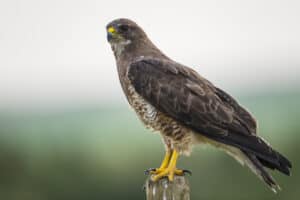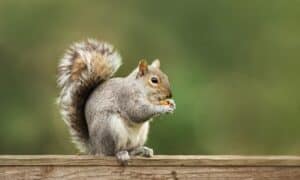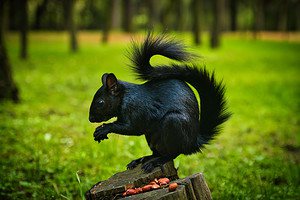Few sights are as lovely as squirrels leaping with agility from tree to tree. With their full and bushy tails, large eyes, and slender bodies, squirrels can make the list of the most adorable creatures. One can find squirrels with various beautiful fur colors like gray, white, brown, black, yellow, and red. Besides being cute, these small rodents make significant contributions to growing trees. Squirrels are so beneficial to the human population that America designates January 21 as National Squirrel Appreciation Day. They do this by burying seeds in the forest and forgetting where they kept them. The forgotten seeds later grow to become big, valuable trees.
There are numerous exciting squirrel facts that squirrel lovers must know. We’ve listed ten of the most incredible ones below.
1. The Red and White Flying Squirrel is the Largest in the World
Red and white flying squirrels can weigh up to 9.5 pounds, making them the largest squirrels worldwide. They beat the western woolly flying squirrels, Olympic marmots, Laotian flying squirrels, and Indian giant squirrels to claim the number one spot.
Although they remain the largest squirrels on Earth, they aren’t as weighty as the western woolly. Red and white flying squirrels are species of “least concern” and primarily live in the forests of Taiwan and China.
2. Groundhogs Are Related to Squirrels
Not many people know that groundhogs are closely related to squirrels. They belong to the squirrel family Sciuridae and are among its largest members. Groundhogs also have a close relationship with chipmunks and prairie dogs.
Like squirrels, groundhogs offer humans some significant benefits even though their herbivorous tendencies make them plant destroyers. Groundhogs help to eat many pests that irritate humans. They also hibernate, as some squirrels do.
3. A Squirrel’s Teeth Never Stops Growing
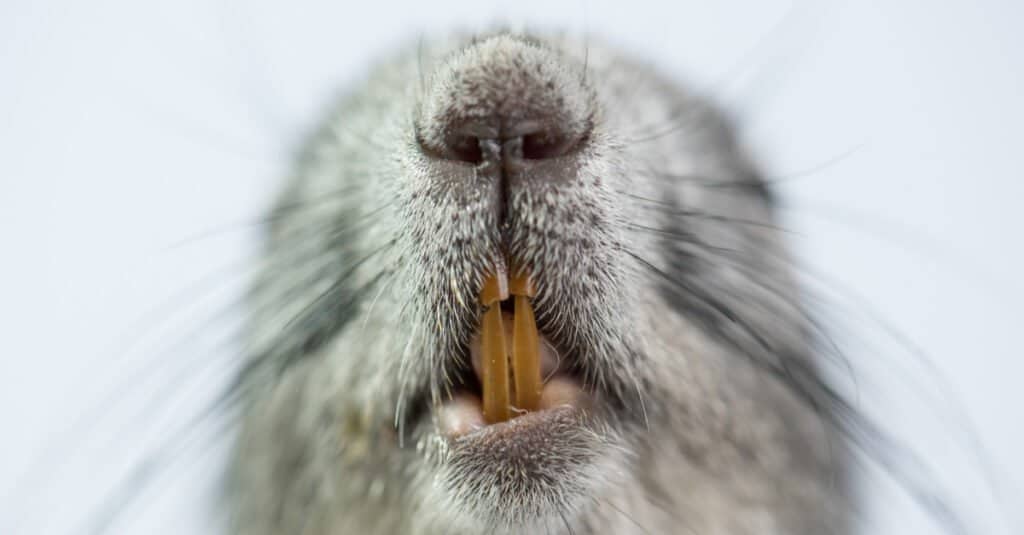
Squirrels’ front teeth do not stop growing.
©Puttinan Inchan/Shutterstock.com
A squirrel’s front teeth are one of their most unique and distinct physical characteristics. They never stop growing! A squirrel’s four front teeth will continuously grow up to 6 inches every year till they die. Experts suggest that this compensates for regular wear and tear as they crack into seeds and nuts and gnaw on tree barks. Their bite is so powerful that it can cut through bones. Unfortunately, when squirrels lose their front teeth, they cannot replace them.
4. Squirrels Can Live Longer Than Dogs
Ordinarily, it doesn’t seem like squirrels live very long. So, it can be surprising to note that they may live longer than dogs sometimes. Although squirrels in the wild have short lifespans of about 6 years, caged squirrels tend to live much longer.
One may find some captive squirrels living up to 24 years, depending on their species. For example, while American red squirrels may live up to 8 years, southern flying squirrels have a lifespan of about five years. Meanwhile, fox squirrels can live as long as 18 years. A dog’s average lifespan is between 10 and 15 years.
5. Some Squirrels Can Fly
There’s such a thing as flying squirrels (Petauristini). That’s not a nickname—they do fly. While they may not fly as carefreely in the air as birds, flying squirrels have a parachute-like membrane. Their membrane, called a patagium, can stretch to allow them to glide between trees. Asides from their patagium, flying squirrels also have adapted long tails to ensure their stability as they drift from tree to tree. Their gliding can also act as a defense tactic against predators. Flying squirrels are indigenous to North America.
6. Squirrels Have Dangerous Bites, Scratches, and Poops
Beware of a squirrel’s poop, scratches, and bites. Squirrel poop resembles a rat’s feces, only that they’re significantly bigger. Over time, depending on their food’s moisture content, their poop starts to turn white and become clumpy. If their meals have low water content, one may notice that it becomes pointed at the ends. Squirrel poop can spread leptospirosis, a bacterial infection that causes flu-like symptoms. Leptospirosis may also result in respiratory problems. Also, squirrels can bite humans when they feel threatened. Like their droppings, their bites and scratches can spread diseases or infections.
7. Squirrels Wag Their Tail When Upset
Squirrels exhibit numerous behaviors that are the opposite of other animals. For instance, everyone knows that dogs wag their tails when they’re happy or excited. This is different with squirrels, as their tail wagging shows they’re upset. Squirrels may also wag their tails to show that they’re in danger and warn other squirrels. In some other cases, their tail wagging means they’re in the mood for mating. It calls the attention of their female counterparts. How can one tell the difference? When a squirrel wants to mate, its tail trembles or shivers as it wags.
8. Squirrels Are Very Intelligent Animals
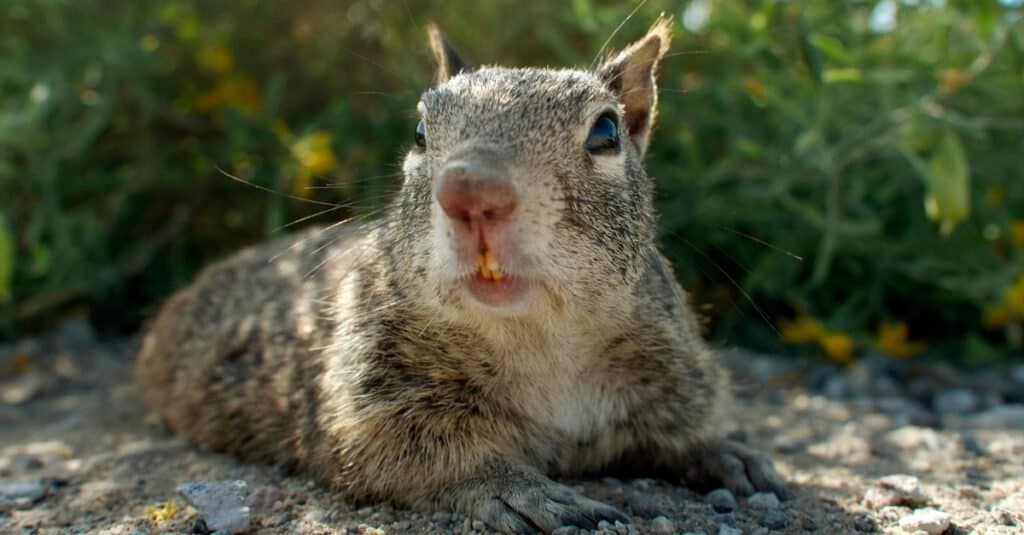
Squirrels can bury meals in preparation for winter.
©Salty View/Shutterstock.com
Squirrels are among the most intelligent creatures, especially considering their survival skills. They’re wise enough to amass meals and bury them in preparation for winter’s food scarcity. Squirrels bury their food in a way that deceives or confuses onlookers.
Although they find it difficult to remember where they buried their food, their sensitive nose helps them find other squirrels’ meals. They also do well with memorizing tree routes.
9. Squirrels Move In Zigzags To Protect Themselves From Danger
Speaking about intelligence, squirrels do perfectly well avoiding, hiding, and escaping from predators. They do this by going zigzag as they run at incredible speeds for their size. The zigzag movements ensure that predators don’t understand their directions for sure.
However, unlike other squirrel species, the Indian giant squirrels lie flat against trees to escape predators.
10. Squirrels Eat Insects
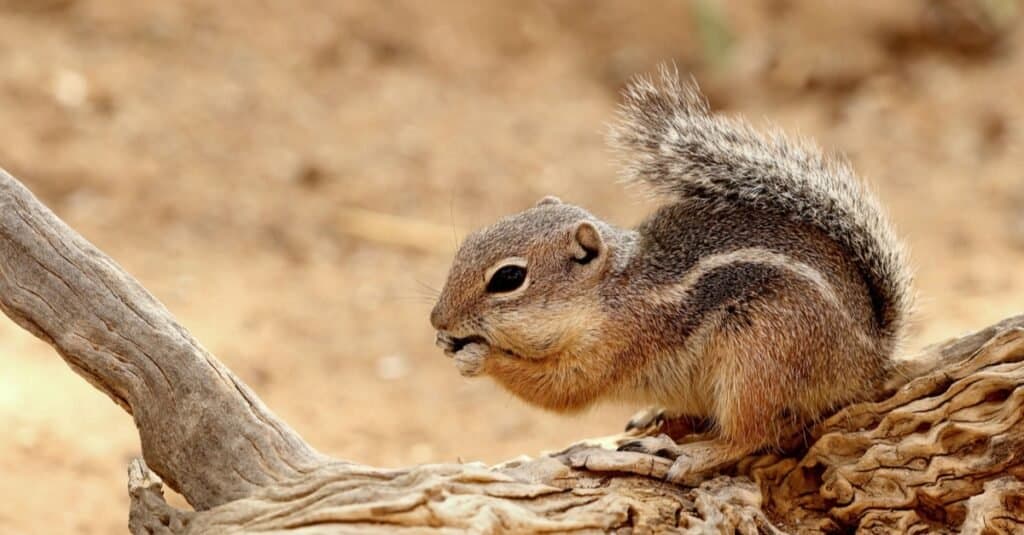
Harris
Antelope
Squirrel eating seeds on old cholla wood in Arizona.
©J Curtis/Shutterstock.com
Squirrels have a reputation for eating seeds, fruits, and nuts. Surprisingly, however, they can also eat insects and meat. Their meals range from larvae, butterflies, and caterpillars to cookies, bread, and dried corn.
The photo featured at the top of this post is © iStock.com/Helen Davies
Thank you for reading! Have some feedback for us? Contact the AZ Animals editorial team.



